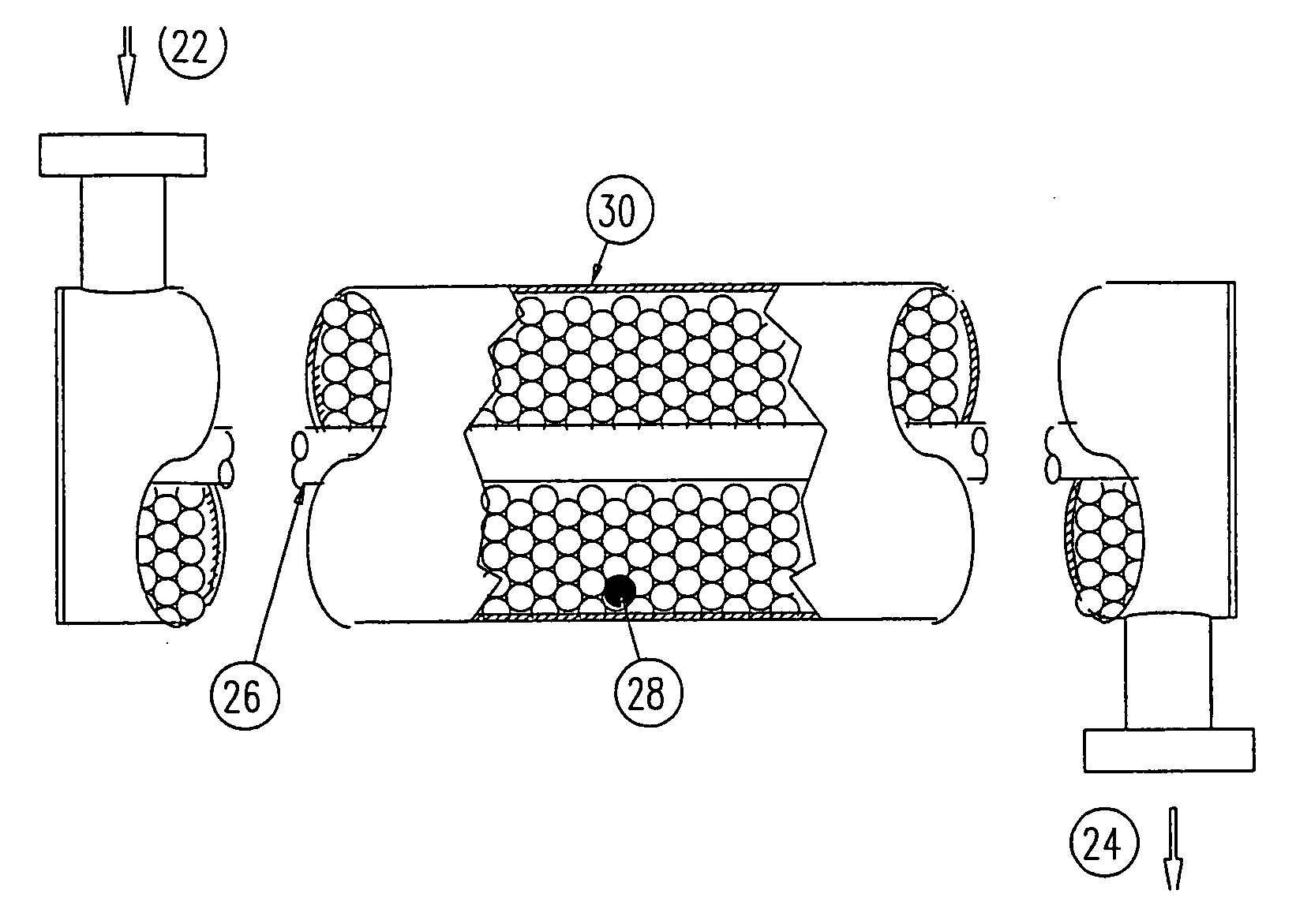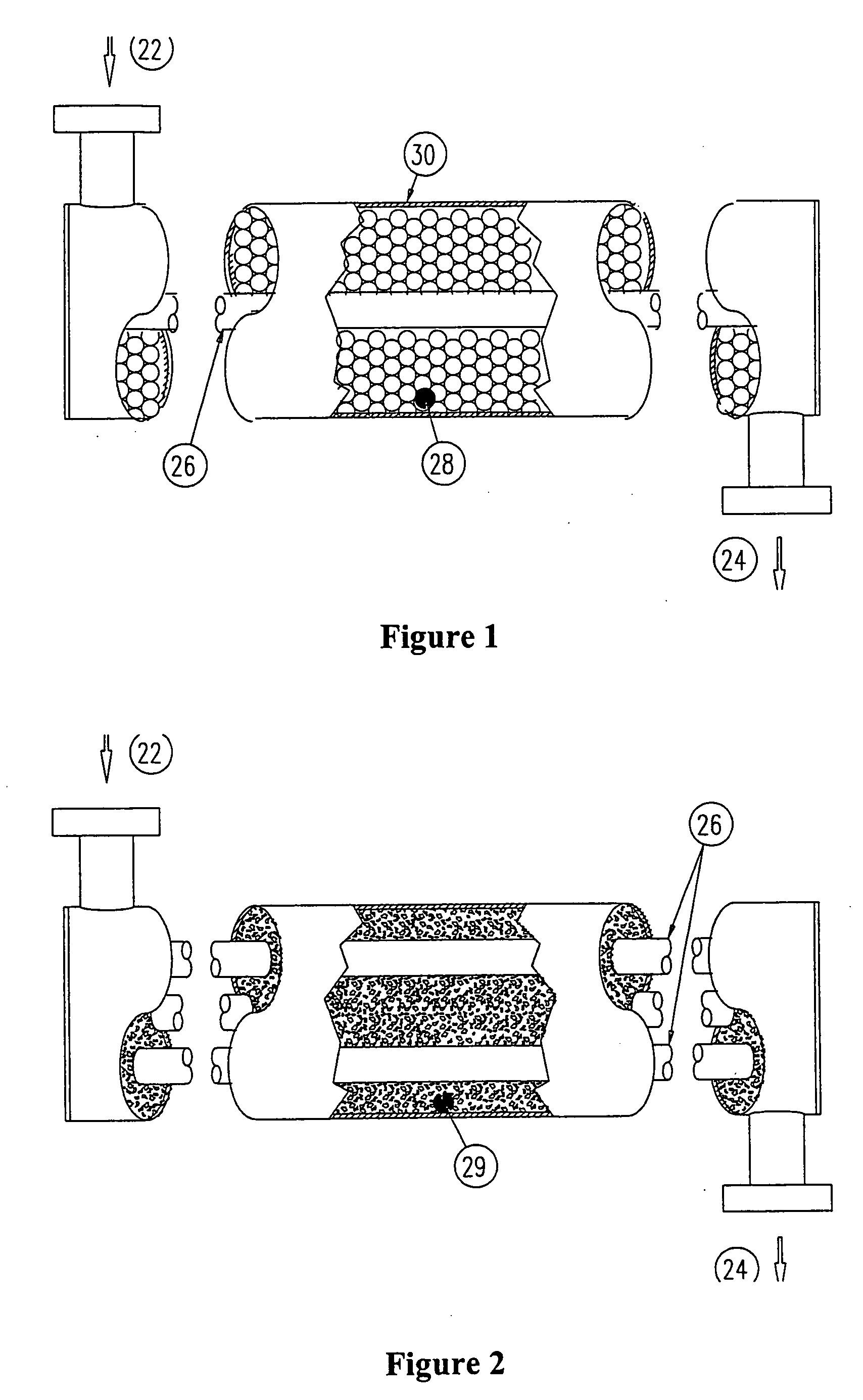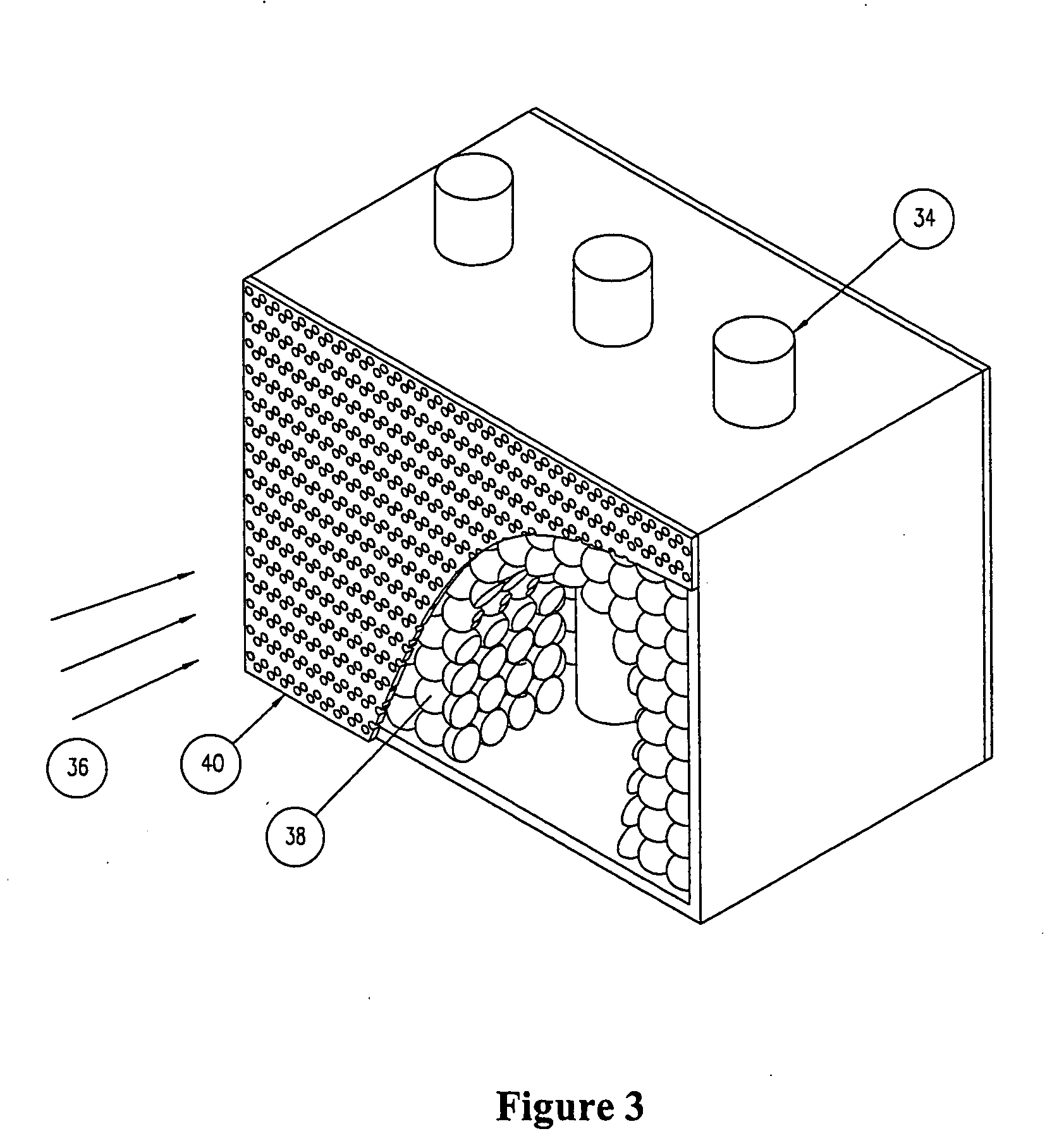Apparatus and method for photocatalytic purification and disinfection of fluids
a technology of photocatalysis and apparatus, applied in the direction of physical/chemical process catalysts, multi-stage water/sewage treatment, metal/metal-oxide/metal-hydroxide catalysts, etc., can solve the problem of increasing the specific irradiated surface area, reducing the efficiency of the process, and reducing the volume fraction of supporting materials. , the effect of reducing the volume fraction of supporting materials
- Summary
- Abstract
- Description
- Claims
- Application Information
AI Technical Summary
Benefits of technology
Problems solved by technology
Method used
Image
Examples
example 1
[0059] TiO2 coatings were applied to three 1-inch samples of soda lime glass slides having a coating thickness of approximately 300-500 nm. For Sample 1, a semitransparent 100% anatase TiO.sub.2 photocatalytic coating was applied using a standard sol gel method. Sitkiewitz, S. D., Heller, A., New J Chem 20, 233-241 (1996). The semitransparent 100% anatase TiO.sub.2 photocatalytic coating of Sample 2 was prepared using the refined sol gel method of Dr. Marc Anderson. U.S. Pat. No. 5,006,248. The photocatalytic coating of Sample 3 contained a mixture of brookite and anatase TiO.sub.2 plus a zirconium compound having about 3 to 200 parts by weight ZrO.sub.2 per 100 parts by weight of the metal oxide particles. The semitransparent coatings of Samples 1-3 had greater than 75% transparency to 365 nm radiation.
[0060] The photoactivity metric used to compare Samples 1-3 was the oxidation rate of salicylic acid. For each sample the slide was immersed in 20 ml of 10 ppm salicylic acid and ir...
example 2
[0063] A semitransparent coating containing a zirconium oxide and brookite and anatase TiO.sub.2 was applied to a quartz slide using dip coating process. As shown in FIG. 6, there is significant transmission of light around 365 nm, the emission wavelength of typical “blacklight” UV sources. As the photon energy is increased, a successively larger fraction of the incident energy is absorbed by the semiconductor coating. For the current invention the rate of oxidation of organic compounds, under typical operating conditions, can be expressed as:
rate=kA((1−T)I).sup.n.TBETA.sub.organic[moles or mass / time] (1)
where: [0064] k=rate constant; [0065] A=irradiated surface area; [0066] T=fractional transmission of incident light through the photocatalytic layer; [0067] I=incident light intensity; [0068] .THETA.=surface concentration of organic compound; and, [0069] n=reaction order in light intensity—typically about 0.5.
[0070] For typical opaque photocatalytic coatings T is essentially ze...
example 3
[0074] Semiconductor photocatalyst coated glass spheres were made and tested. Brookite and anatase TiO.sub.2 plus ZrO.sub.2 was coated onto 6 mm soda-lime glass spheres. The transparency of each coating layer to 365 nm light was about 85%. A packed bed of these spheres were placed in a test cell of radius 2.2 cm. Air at 40% relative humidity was passed through the bed at a flow rate of 40 cm.sup.3 / s. Formaldehyde was used as the test contaminant at 2 ppm(v / v). The test cell was irradiated from above with a 365 nm UV source at 7.0 mW / cm.sup.2. The single pass conversion of formaldehyde was measured as a function of sphere depth.
[0075] The results of this experiment are summarized in Table 1. These results show that as more layers of spheres were added, increasing the bed depth, the single pass conversion of formaldehyde increased. Since the illumination of each successive coating decreases, the overall system volumetric performance decreases with increased bed depth as illustrated b...
PUM
| Property | Measurement | Unit |
|---|---|---|
| wavelength | aaaaa | aaaaa |
| wavelength | aaaaa | aaaaa |
| wavelength | aaaaa | aaaaa |
Abstract
Description
Claims
Application Information
 Login to View More
Login to View More - R&D
- Intellectual Property
- Life Sciences
- Materials
- Tech Scout
- Unparalleled Data Quality
- Higher Quality Content
- 60% Fewer Hallucinations
Browse by: Latest US Patents, China's latest patents, Technical Efficacy Thesaurus, Application Domain, Technology Topic, Popular Technical Reports.
© 2025 PatSnap. All rights reserved.Legal|Privacy policy|Modern Slavery Act Transparency Statement|Sitemap|About US| Contact US: help@patsnap.com



